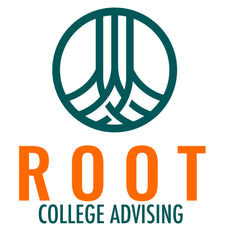Students often have multiple choices regarding how to apply to college. Depending on the school, application options can include various ways to apply including the following:
Rolling: Students can apply early in the cycle (some in August!) and the college notifies a few weeks or months after application is submitted.
Early Action (EA): Notifies before March 1st (often in December) if student applies by a fall deadline. Student will still have until May 1st to make a decision.
Restricted Early Action (REA): The same as above with college-specific restrictions on where else they may apply.
Early Decision I (ED l): A binding agreement that the student will attend the college if admitted. Deadlines to apply are usually in November and applicants are typically notified in December. If admitted, the student immediately withdraws all other applications.
Early Decision ll (ED ll): ED II allows students to wait until later in the cycle to commit to a binding decision. ED II deadlines are often in January with notifications about six weeks later.
Regular Decision (RD): Notifies by March/April and usually has later application deadlines. Students typically have until May 1st to make a decision.
When the student begins finalizing their college list, it’s a good time to start thinking about how they are going to apply. Need a translation? Start by considering the following questions:
Is there a first choice college?
Have you visited colleges online and/or in person and is there a clear first choice? Does the family agree on the same first choice if there is one?
Are finances a factor?
Timing of application can determine scholarship eligibility and how one applies can be impacted by financial need. Research how all aid is awarded by visiting the colleges’ financial aid and scholarship pages. Early Decision applicants should consider how financial need will be considered by the college.
Do admission rates vary depending on how students apply?
Often, the answer is yes and, sometimes, the differences can be dramatic. For example, American University’s admit rate for Early Decision applicants has been around 80% for the past few years while their Regular Decision admit rate has been around 35%. AU fills over half their incoming class with applicants from the Early Decision pool. The majority of applicants apply for Regular Decision. Their admission is much more competitive as there are fewer openings and more applicants.
Dartmouth, Kenyon, Northwestern, Pomona, and many others admit Early Decision applicants at a higher percentage rate than students in their Regular Decision pool. In fact, they fill over half their class doing so. Schools typically do this for two reasons. One, it allows colleges to control yield (how many accepted students say yes back). Each college has to hit specific numbers to create the class profile as defined by institutional goals. It is easiest to do this during the Early Decision cycle as once admitted, they know the student will attend. Second, this allows colleges to protect their selectivity ranking as they do not need to take a chance on admitting as many students who may or may not attend.
Early Action admission rates are also typically a bit higher than Regular Decision rates. So, usually, it makes the most sense to apply Early Action to take advantage of these higher admit rates and scholarship opportunities. But, importantly, not always. Stanford, Notre Dame and Georgetown are three schools where it may not always be to one’s advantage to go Early Action.
Bonus Facts:
- Sometimes scholarship deadlines are before admission deadlines. For example, students applying to USC who wish to be considered for merit scholarships must apply by December yet the Regular Decision deadline is in January.
- Some colleges only allow admitted students to apply to their honors programs. Apply as early as possible to these campuses if honors programs are of interest.
In the end, students are great at choosing how to apply once they know their options and have finalized their college list. Then they can feel confident that they applied with the best strategy and can relax while waiting for decisions to appear.


